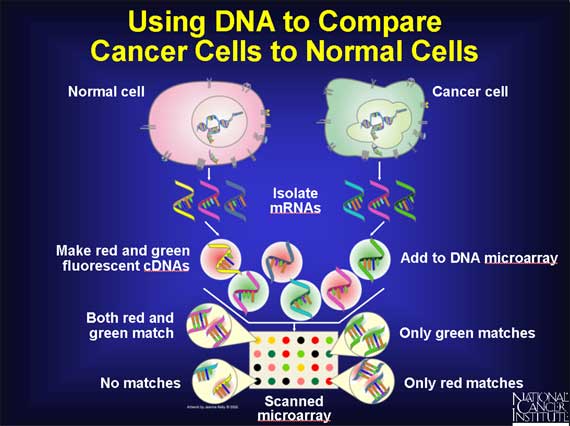|
Besides being used to assess the activity of genes being expressed in a single sample, DNA microarrays can also be used to compare the patterns of gene expression in two different cell populations, such as a population of cancer cells with a population of normal cells. In this case, two different fluorescent dyes are used. For example, a red dye can label cDNAs derived from corresponding normal cells, and a green dye, those derived from cancer cells. When the red and green cDNAs are mixed together and placed on a DNA microarray, the green cDNAs will bind to genes expressed in cancer cells and the red cDNAs will bind to genes expressed in normal cells. Green spots represent more copies of a gene being made in a cancer cell, and red spots mean more copies are being made in the normal cell. Yellow spots, caused by mixing red and green fluorescence, represent genes whose expression is roughly the same in both cell types, and black spots, or absence of fluorescence, represent genes expressed in neither cell type.

< Previous | Index | Next Slide > |